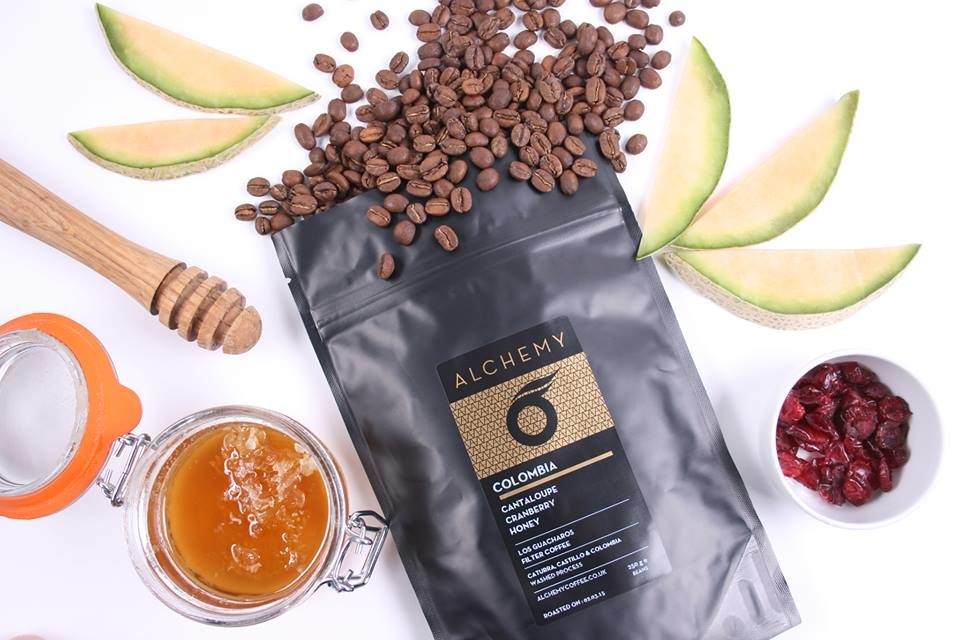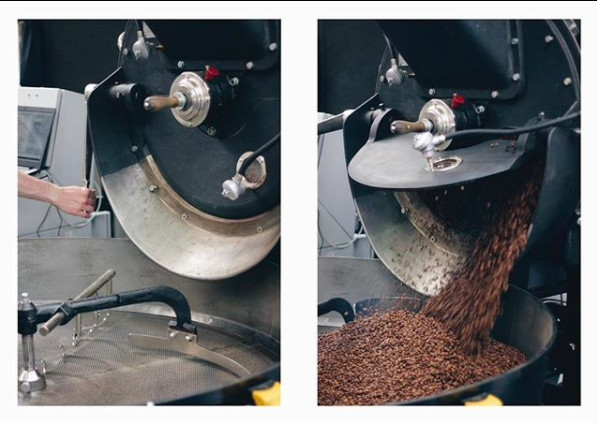So – is acidity a good thing in coffee?
For us here at Alchemy, we would say yes, a little bit of acidity in coffee is a good thing, as long as it is balanced and doesn’t dominate.
Coffee, like another of our favourites, beer, is by nature a bitter drink. But like a good beer, a good coffee should have its bitterness balanced by both its sweetness and its acidity, so that no one aspect overpowers the flavour.
Acidity in coffee can range from the crisp acidity of an apple (Malic acidity) to the grape-like (Tartaric acidity) which makes your mouth water (think ‘Tangfastics’), to the vinegary (Acetic acid) or the sharpness of citrus (Citric acid).
Too much of any of these can lead to a bad experience. Malic acidity can give an astringent, unripe fruit aspect and Acetic can give off funky or fermented tastes. However, when they are in balance, and in the presence of sugars (the natural sweetness in a good coffee), then that vinegar experience can turn in to wine or champagne.

It is the acidity in coffee that gives it life or ‘brightness’; it gives the high notes and complexity. Low acidity coffees can taste flat or earthy. This is one of the complaints that people sometimes have of cold brew coffee, where it is the brew method that lessens the acidity of the final beverage.
So where does this acidity come from?
Much of it is inherent in the coffee itself (acids make up about 7-10% of coffee’s dry mass). The sugar content of the bean is also important as the sucrose in coffee undergoes a caramelisation process during the roast, which generates Acetic acid.

The time that the cherry is left to mature on the tree is very important. The amount of sugar present increases as the coffee cherry ripens – reinforcing the requirement to only pick ripe cherries! These acids and sugars present in the coffee can be the result of the variety of the plant, and the elevation and the nature of the soil that it is grown in.
Elevation, ripening time and mechanical harvesting are some of the reasons a Bourbon from Brazil has less acidity than a Bourbon from Guatemala or Rwanda, but these acids can be emphasised or muted by the roasting process.
In this short video you can see one of our Direct Trade partners, Lucia Ortiz, demonstrate one of her tricks for only picking ripe cherries.
The acidity in coffee tends to be at its maximum towards the middle of the roast around the first crack, when the pressure from moisture in the bean trying to escape as vapour ruptures the structure of the bean. From here it starts to decrease during what is often called the ‘development’ part of the roast. Very light or ‘under-developed’ roasts that have a short development after first crack can emphasise acidity, but it is often sour and unbalanced. long ‘baked’ roasts can mute the acidity and leave the coffee lifeless and tasting flat.
As in all things, a balance needs to be struck to allow the coffee the development time that is required to develop the flavours and complex acidity that is required to give the coffee sparkle.
If you would like to try our coffee, then you could visit our cafés in Shoreditch or in the City of London, or we offer home delivery here. If you need café supply then take a look here.
Next time we move on to the letter B, and we will be explaining the term ‘Blend’.



